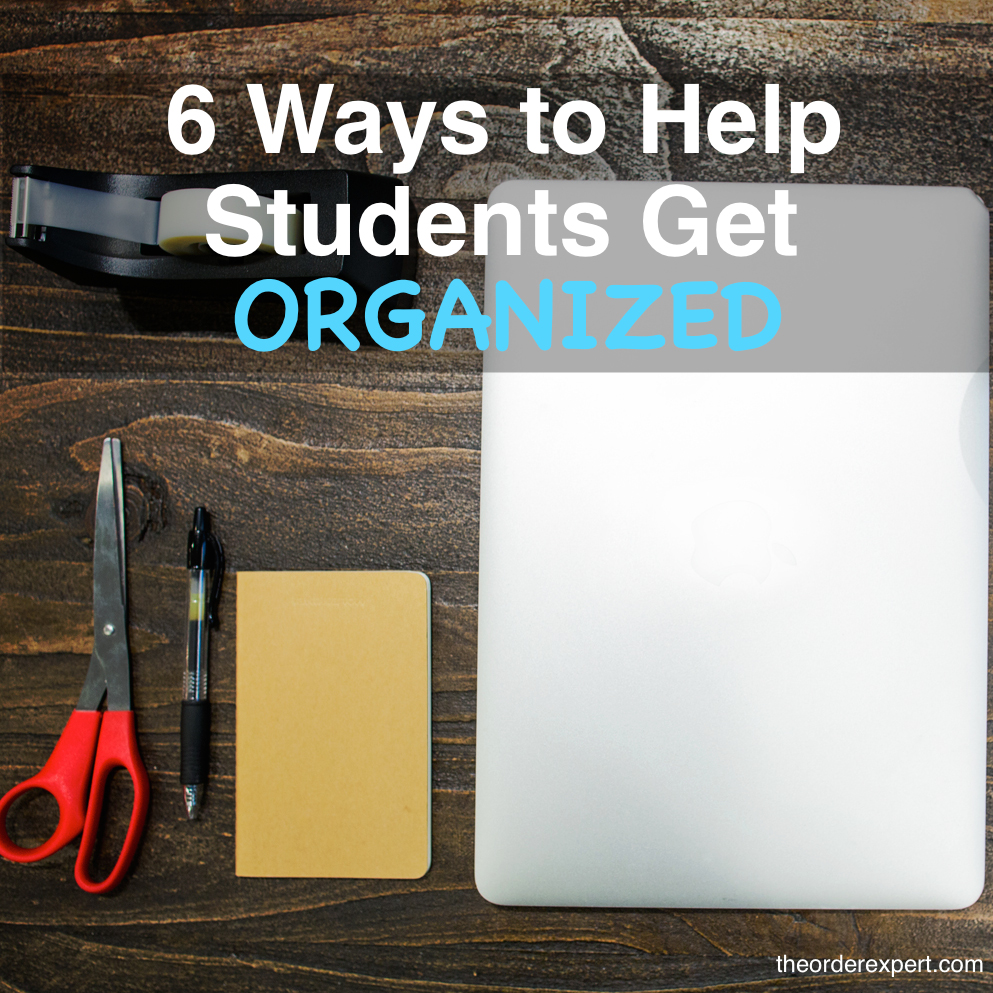Are you a student or parent of a student?
Do you need help getting everything ready and organized for the new school year?
In this post, I offer six different ways for students to go to the head of the class in the subject of organization.
Create a dedicated homework station.
Make completing homework assignments and projects a breeze with a dedicated homework station.
This can either be a desk in the student’s room, or a flat surface in another area of the house, such as a kitchen or dining room table.
The student’s homework area should be well-stocked with related school supplies such as: pens, pencils, highlighters, markers, eraser, pencil sharpener, three-hole puncher, paper, glue, tape, scissors, ruler, and so on.
You can either buy office supply organizers, or fashion your own out of containers, boxes, and other items found around the house.
Make sure to have shelving or other storage available for textbooks, notebooks, laptop, and other study materials.
Now, if you don’t have the space in your home for a desk, simply create a school-supply carrier, such as one on a rolling file on casters, or put together a portable caddy, such as a metal basket or plastic container, stocked with school supplies.
When the student does their homework at the kitchen, dining room table, or countertop, simply pull out the carrier. Store this carrier in an unused corner, or empty space in a bookshelf, when not in use.
Carve out a hallway storage area.
Make sure the student has everything they need for school in one centralized location in the house, such as the hallway. It’s a handy way to keep backpacks, sports, equipment, and project materials in one place, instead of all over the house.
You could create cubbies using an old short bookcase or cabinet, hang hooks on the wall and place baskets on the floor, or purchase hanging wall pockets to mount in the hallway. Don’t forget to include space for weather essentials such as jackets, coats, umbrellas, shoes, boots and accessories.
If you want to be even more organized, you could create a small calendar to hang inside or near the cubby. You could also create a “going to school” checklist, complete with the materials the student needs for school.
Review syllabi.
Studying a syllabus is a great way for students to learn about their classes for the semester and year.
The teacher or professor has taken the time to organize all the information a student will need about their particular class or course.
Not only will the student better understand what the class/course is about, they’ll know what materials are needed for class, what subjects to study, as well as upcoming exams, and due dates for assignments and projects.
Reviewing a syllabus can be a lesson in and of itself!
Purchase (and use) a planner.
It’s important for a student to be able to keep track of their school work and extracurricular activities throughout the school year. Depending on the student’s grade level and personal preferences, a paper planner, wall calendar, or digital calendar will suffice.
Have the student enter class schedules, assignment and project due dates, exam dates, as well as holidays and vacations into the planner.
Encourage them to review the planner at the beginning of every day and week, so they can practice keeping track of their time and progress at school.
Buy a backpack with compartments.
Make it easy for a student to store their school materials by purchasing a backpack with built-in compartments. This can help them keep school materials neatly contained.
Before using the bag, the student should look through the bag to get a sense of the interior dimensions. They should then decide where they’ll store items.
For example, a large compartment could easily store notebooks and textbooks, while a smaller compartment would be a good choice for a pencil-case, and lunch money.
Create files for schoolwork.
Having a good storage system at home makes it easier to file, and find schoolwork.
Create files according to the student’s age and needs; younger students should have less files in general, while older ones can deal with more files as needed per class, course, or project.
Files should be clearly labeled, and given a specific home, such as in a drawer in a filing cabinet, or in a filing crate.
Who says files have to be dull and boring? Check out this amazing collection of colorful and creative filing folders.
Learn how to organize a notebook.
A notebook or binder has its own set of organizational challenges. Where do you write in information, keep notes, and keep everything organized?
Before using a notebook, the student should think about what the notebook will be used for, how often and where it will be used. They might even like to think about how they would like to use or organize the notebook.
After this, they can create a plan of action for their needs. Do they need to create dividers for different classes, subjects, homework or assignments? Do they need to keep space for notes, sketches, and drawing?
For more detailed help, check out my post on how to organize a notebook.
How about you? Do you find it easy or difficult to help students get organized? Which of these tips are you going to use or try out? Join the conversation and leave a comment below!





0 Comments